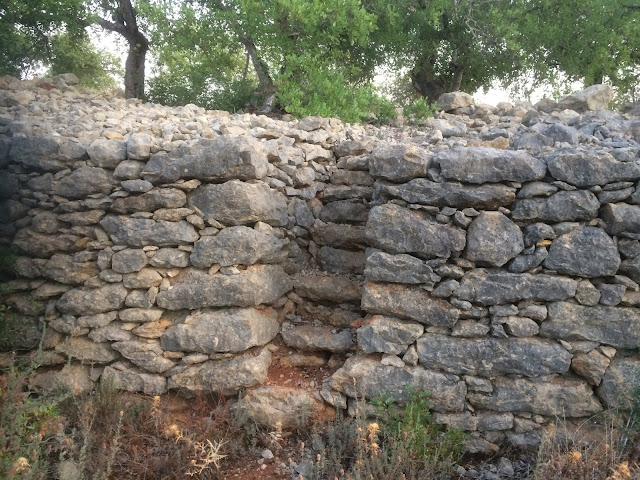A bit of correspondence between Rod and me with my daft questions omitted. Be both thought you might be interested.
These photos were taken about 300 metres from the house in Portugal. The stone is limestone, more amenable than Greenhow limestone in that despite being very hard and heavy you can dress it to some extent. There seems to be a lot of front pinning, which is just starting to fall away, but that does seem to be common practice in those parts. The trees behind the wall look to be about 75 years old at a very hazarded guess which might give a date for the wall.
They are retaining walls and very thick, probably built as much as a place to deposit clearance stone as a means of levelling cultivated land on a slope. There were some free standing walls in the adjacent area all built in a very similar style with the bases around 600/700 mm thick and around chest height, but often with no proper toppers. Perhaps the lack of rain and winter frost might account for this, but you would think goats and sheep would soon damage the walls in the absence of a good topper.


Guess that with limestone being more dense and less crumbly than sand/gritstone the friction produced is sufficient to hold front pins in place .. for a time anyway! Are these walls are part of terracing? Paul
ReplyDeleteGuess that with limestone being more dense and less crumbly than sand/gritstone the friction produced is sufficient to hold front pins in place .. for a time anyway! Are these walls are part of terracing? Paul
ReplyDelete